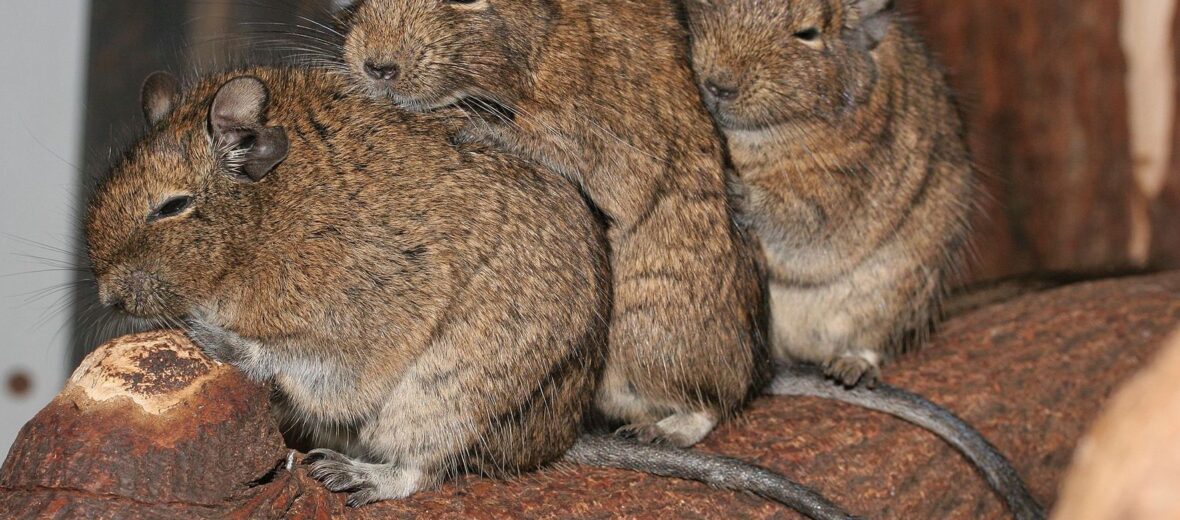
The degu, aka common degu or brush-tailed rat, can be found in west central Chile. They prefer semi-arid shrubland (called matorral). These curious rodents are relatives of the chinchilla and the guinea pig. In certain parts of their range they are considered pests. The degu is also a popular pet. Due to their stable numbers these little critters are listed as Least Concern by the IUCN.
First the Stats…
Scientific name: Octodon degus
Weight: Up to 11 ounces
Length: Up to 12 inches, plus up to a 6 inch long tail
Lifespan: Up to 8 years
Now on to the Facts!
1.) These social critters can be seen in groups of up to 7 individuals (up to 2 males and up to 5 females).
2.) Degus are crepuscular (active at dawn and dusk), with some diurnal (active during the day) behaviors thrown in.
3.) They are semi-fossorial (spend part of their lives in burrows).
4.) The degu constructs large systems of burrows that they, in turn, share with Bennett’s chinchilla rats.
5.) Degus, like chinchillas, enjoy dust baths. This is where they will wallow in dirt, dust, or ash to aid in keeping the oil from their fur under control. They also mark their favorite wallows with a scent from their scent glands.
But wait, there’s more on the degu!
6.) These rodents feast on bark, forbs, leaves, and seeds. Thus making them herbivores (eat plant matter).
7.) Foxes and birds of prey hunt degus.
Did you know…?
The degu is considered a potentially invasive species.
8.) Females engage in allomothering (raising 1 another’s young).
9.) Being polygynous (1 male mates with several females), these social critters breed once a year during the dry years and 2x a year during the wet years.
10.) Females undergo up to a 90 day gestation (pregnancy) that yields up to 6 pups.
But wait, there’s still more on the degu!
11.) Pups are born precocial (mostly or fully developed at birth).
12.) If a predator catches them by the tail, they will spin until they de-glove (pull the skin away from) their tail, allowing them to escape. The skin will grow back, in time.
Did you know…?
It has been shown that these animals can see ultraviolet wavelengths.
13.) During winter, they will cache (store) food.
14.) Degus possess great sight, hearing, and smell. All are used for the detection of predators.
15.) A wide range of calls are utilized to communicate with each other.
Now a Short Degu Video!
Be sure to share & comment below! Also, check out the Critter Science YouTube channel. Videos added frequently!
Want to suggest a critter for me to write about? Let me know here.




Leave a Reply